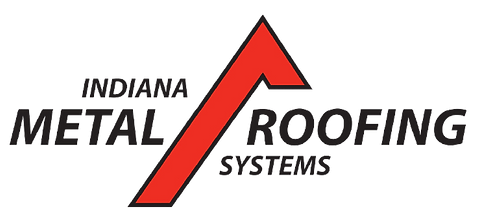Protecting Your Home: Timely Tips for Storm Damage Roof Repair
- Joseph Justice
- Dec 18, 2024
- 4 min read
When severe weather hits, your roof is your home's first line of defense. However, storm damage can happen unexpectedly, leaving your roof vulnerable to leaks and further deterioration. At Indiana Metal Roofing Systems in Fort Wayne, IN, we understand the importance of taking immediate action to repair roof damage after a storm to protect your home and prevent costly repairs. Here are essential steps to take for timely storm damage roof repair.

Identifying Storm Damage to Your Roof
Storms can cause a variety of issues for your roof, and it’s crucial to know what to look for. Here are common types of damage that often occur after storms:
1. Missing or Damaged Shingles
High winds can tear shingles from your roof, leaving the underlying structure exposed to the elements. Missing shingles can quickly lead to leaks and water damage.
2. Roof Leaks
Heavy rainfall can exploit any minor crack or hole in your roof, resulting in leaks. These leaks might not always be immediately visible but can cause severe damage if left unchecked.
3. Gutter and Downspout Damage
Strong winds and heavy debris can clog or damage gutters, preventing proper water drainage. This can lead to water pooling on your roof and eventually leaking into your home.
4. Hail Damage
Hail can puncture roofing materials, leading to cracks or dents that compromise the roof's integrity.
Fact: In the U.S., insured hail losses typically range from $8 billion to $14 billion annually.
The Importance of Regular Roof Inspections
Regular inspections are the first step in maintaining a healthy roof, especially after a storm. You should inspect your roof at least twice a year and after any severe weather event.
A professional roof inspection can identify issues that are not always visible from the ground. A trained inspector will check for damaged or missing shingles, cracks in flashing, and issues with roof vents or chimneys.
Essential Maintenance to Prevent Storm Damage
While you can’t always prevent a storm from causing damage, routine maintenance can significantly reduce the risk. Here are some maintenance tips to help keep your roof in top shape:
1. Replace Missing or Damaged Shingles
If shingles are missing or damaged, replace them as soon as possible. Shingles act as a barrier to rain, wind, and snow, and any gaps in your roof make it more susceptible to water damage.
2. Inspect and Reseal Flashing
Flashing, typically made from metal, directs water away from vulnerable areas of the roof, such as around chimneys, vents, and skylights. Over time, flashing can become loose or damaged, allowing water to seep in. Resealing or replacing flashing is essential to prevent leaks.
3. Clean Gutters and Downspouts
Gutters and downspouts should be cleaned regularly to prevent debris buildup, which can cause water to back up and damage your roof and home’s foundation. Clogged gutters can also increase the risk of ice dams forming in winter, which can damage your roof.
Responding to Storm Damage: Immediate Steps
When storm damage occurs, taking quick action can prevent further damage to your home:
1. Temporary Roof Repairs
If there is visible damage to your roof, such as missing shingles or exposed underlayment, use tarps or waterproof materials to cover the affected areas. This temporary measure will prevent water from entering your home until professional repairs can be made.
2. Document the Damage
Take photos of any visible damage, both inside and outside your home. This documentation will be essential when filing an insurance claim.
3. Contact Your Insurance Company
After securing your home, contact your insurance company to begin the claims process. Be sure to provide photos and detailed descriptions of the damage.
Choosing the Right Roofing Contractor
After a storm, it's important to hire a reliable roofing contractor to repair the damage. Here are some tips for selecting the right contractor:
Look for Experience in Storm Damage Repair: Choose a contractor with experience in storm damage repairs, as they will know how to assess and address issues specific to this type of damage.
Check Licensing and Insurance: Verify that the contractor is licensed and insured. This protects you from liability if an accident occurs during repairs.
Get Detailed Quotes: Request quotes from several contractors, and make sure the estimates include labor, materials, and timelines. Be wary of contractors offering unusually low bids, as they may be cutting corners.
At Indiana Metal Roofing Systems, we specialize in storm damage repair, offering top-quality roofing services with a focus on durability and customer satisfaction.
FAQs
1. What should I do immediately after my roof is damaged in a storm?First, cover any exposed areas with tarps to prevent further water damage. Then, take photos of the damage and contact your insurance company to start the claims process.
2. How often should I have my roof inspected?It’s recommended to have your roof inspected twice a year and after any severe weather event to catch potential issues early.
3. Can I perform storm damage repairs myself?While you can make temporary fixes, it’s best to hire a professional roofing contractor for more permanent repairs to ensure the job is done safely and effectively.
4. Will insurance cover storm damage to my roof?Most homeowners’ insurance policies cover storm damage, but it’s important to document the damage and contact your insurance company promptly.
5. How long does storm damage repair take?The timeline for repairs depends on the extent of the damage, but most repairs can be completed within a few days to a week.
Conclusion
Addressing storm damage to your roof quickly and effectively is essential to protecting your home and preventing costly repairs down the road. Regular maintenance and prompt repairs after storms will help extend the life of your roof and ensure your home remains safe and secure.
For more insights on metal roofing benefits, check out our article on the Ultimate Guide to Metal Roofing.


Comments